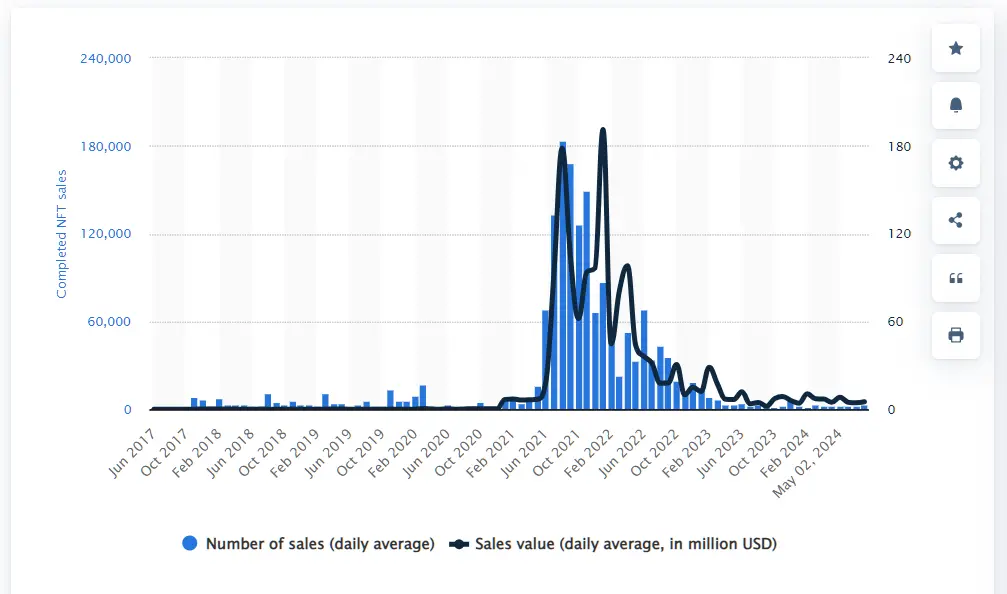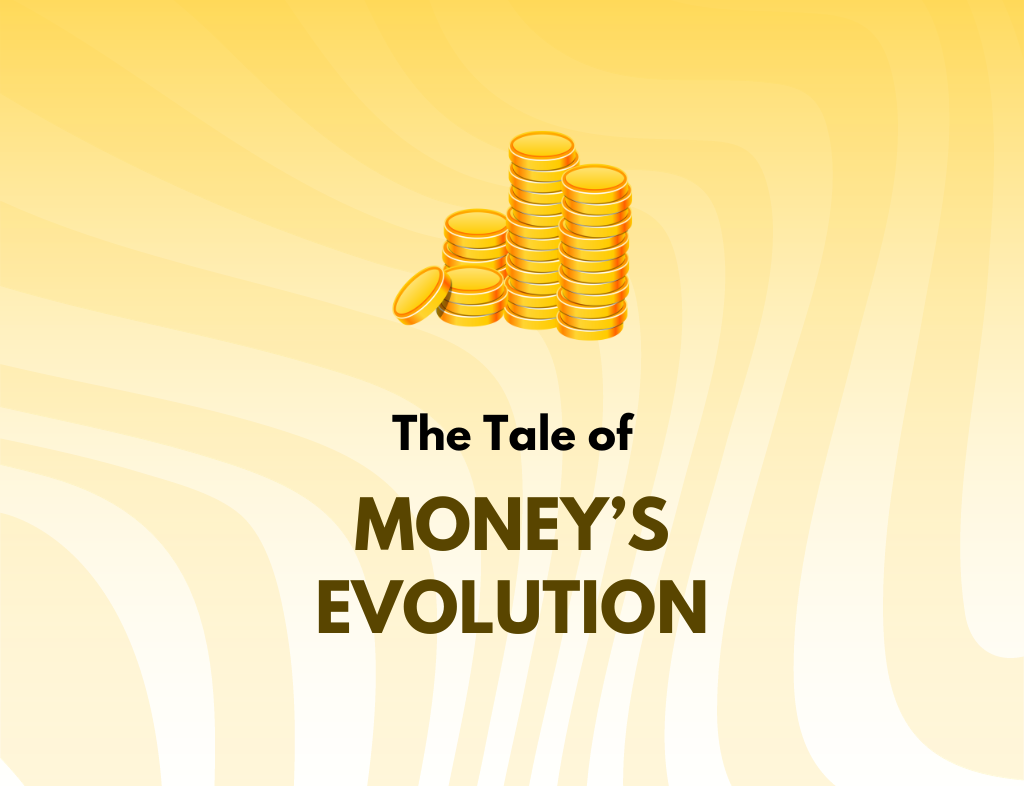Introduction
Once upon a time in the digital world, there was a new kind of asset that everyone started talking about NFTs, or non-fungible tokens. But what exactly are these mysterious digital tokens, and why are they making headlines?
Imagine you have a unique baseball card. It’s one-of-a-kind, and no other card is exactly like it. Consider this concept in the digital world. NFTs are like those unique baseball cards, but they exist online. Each NFT represents a specific digital item, whether art, music, a tweet, or even a virtual piece of real estate. Unlike regular cryptocurrencies like Bitcoin or Ethereum, which are fungible and can be exchanged one-for-one, NFTs are non-fungible, meaning each is unique and cannot be exchanged on a one-for-one basis with another NFT

Table of Contents
The Birth of NFTs
Our story begins with the creation of blockchain technology. Think of a blockchain as a secure digital ledger where every transaction is recorded. Bitcoin, the first cryptocurrency, introduced the world to blockchain. But it wasn’t until Ethereum came along that the concept of NFTs truly took off. Ethereum’s blockchain allows for more than just currency transactions; it enables the creation of smart contracts—self-executing contracts with the terms directly written into code. This innovation paved the way for NFTs.
In 2017, a game called CryptoKitties was launched on the Ethereum blockchain, allowing users to buy, sell, and breed unique virtual cats. Each cat was an NFT, and CryptoKitties became so popular that it jammed the Ethereum network. This was the first major example of NFTs catching the public’s eye.
How Do NFTs Work?
To understand how NFTs work, let’s dive a bit into the technical side. When you create an NFT, you are minting it on a blockchain. This minting process involves creating a digital certificate of ownership that is both unique and immutable (cannot be changed). This certificate includes details about the NFT, such as its creator, ownership history, and any additional metadata (like a description or a link to the digital asset).
Once an NFT is minted, it can be bought, sold, or traded on various online marketplaces like OpenSea, Rarible, and Foundation. These marketplaces operate much like auction houses where people bid on NFTs. When someone buys an NFT, the transaction is recorded on the blockchain, and the ownership is transferred to the buyer.
The Rise of NFTs
NFTs gained significant traction in 2021 when artists and creators began to see the potential of selling their digital work directly to buyers without the need for middlemen like galleries or auction houses. One of the most notable sales was by the digital artist Beeple, whose NFT artwork “Everyday: The First 5000 Days” sold for a staggering $69 million at Christie’s auction house. This sale put NFTs on the map and sparked widespread interest.
According to NonFungible.com, the NFT market saw an explosion of activity in 2021, with a total sales volume exceeding $2 billion in the first quarter alone. The number of active wallets, which are used to buy and store NFTs, also grew significantly, indicating a surge in interest and participation. Here are the average number and value of completed NFT sales on the Ethereum blockchain as of May 5, 2024.

This data is sourced from Statista.com
Why Are NFTs Valuable?
You might wonder why people are willing to spend so much money on digital items. The value of an NFT comes from its uniqueness and the proof of ownership provided by the blockchain. Owning an NFT is like owning a rare piece of art or a collector’s item. It’s valuable because it’s unique and cannot be replicated.
Moreover, NFTs provide a way for creators to earn royalties. Smart contracts can be programmed to pay the original creator a percentage of the sale price every time the NFT is resold. This means that artists can continue to earn from their work as it changes hands over time.
Beyond Art: The Future of NFTs
While digital art and collectibles are the most well-known uses of NFTs, their potential extends far beyond these categories. Here are a few exciting areas where NFTs are making an impact:
1. Gaming: In the gaming industry, NFTs can represent in-game items like weapons, skins, or virtual land. Players can own and trade these items, creating a new economy within the game.
2. Virtual Real Estate: Platforms like Decentraland and The Sandbox allow users to buy, sell, and develop virtual land parcels as NFTs. This virtual real estate can be used for building virtual businesses, galleries, and more.
3. Music and Entertainment: Musicians and entertainers can release NFT albums, concert tickets, and exclusive content. Fans who buy these NFTs get unique access and experiences.
4. Identity and Certification: NFTs can be used to issue and verify digital identities, diplomas, and certificates. This could streamline processes in education, job applications, and more.
The Challenges Ahead
Despite the excitement, NFTs are not without their challenges. One significant concern is the environmental impact. Minting and transacting NFTs on blockchain networks, particularly Ethereum, consume a lot of energy. Efforts are underway to develop more eco-friendly solutions, such as Ethereum’s planned transition to a proof-of-stake (PoS) system, which is expected to reduce energy consumption.
Another challenge is the volatility of the market. NFT prices can fluctuate wildly, making it a risky investment. Additionally, the space is still new, and regulatory frameworks are not yet fully developed, which can lead to legal uncertainties.
Conclusion
NFTs represent a fascinating intersection of technology, art, and finance. They offer new opportunities for creators and collectors alike, and their potential applications are vast and varied. As with any new technology, there are risks and challenges, but the promise of NFTs is undeniable. Whether you’re an artist looking to sell your digital work, a gamer wanting to own in-game items, or just someone curious about the latest trends in tech, NFTs are worth exploring. The digital world is evolving, and NFTs are leading the way into this exciting new frontier.
Stay tuned to DeFiPe blogs as we continue to cover every aspect of the cryptocurrency universe, providing the latest updates and in-depth discussions to help you navigate this ever-evolving world.
Share this content:

